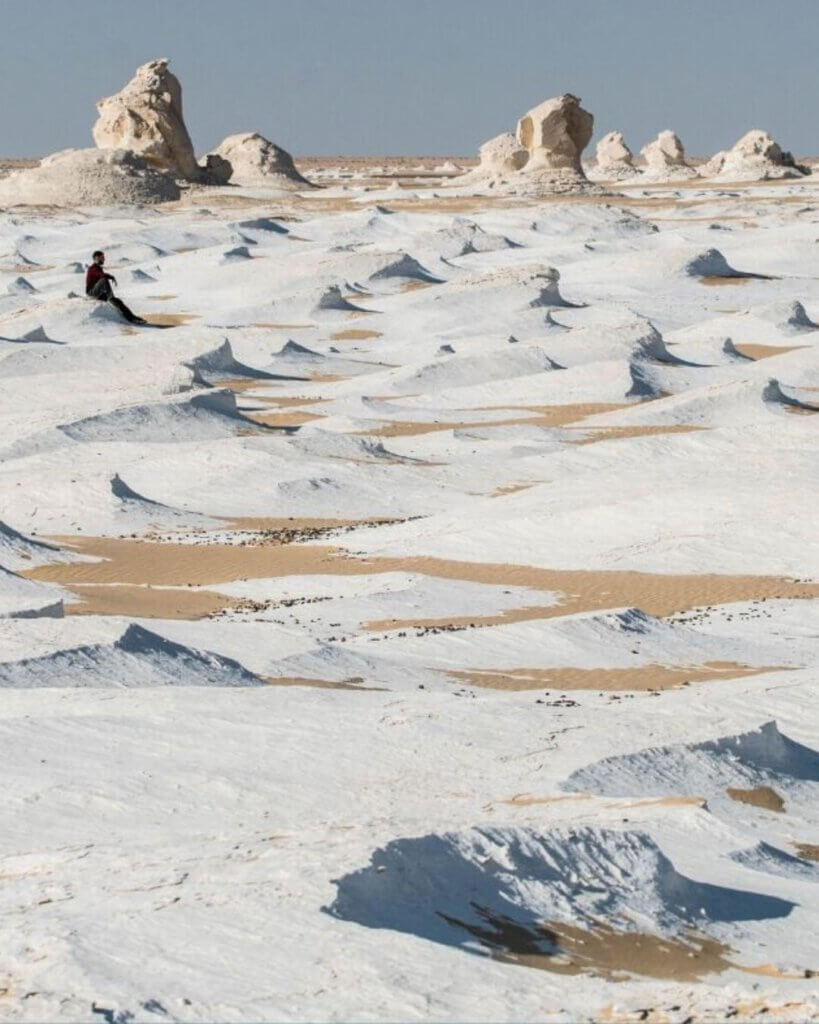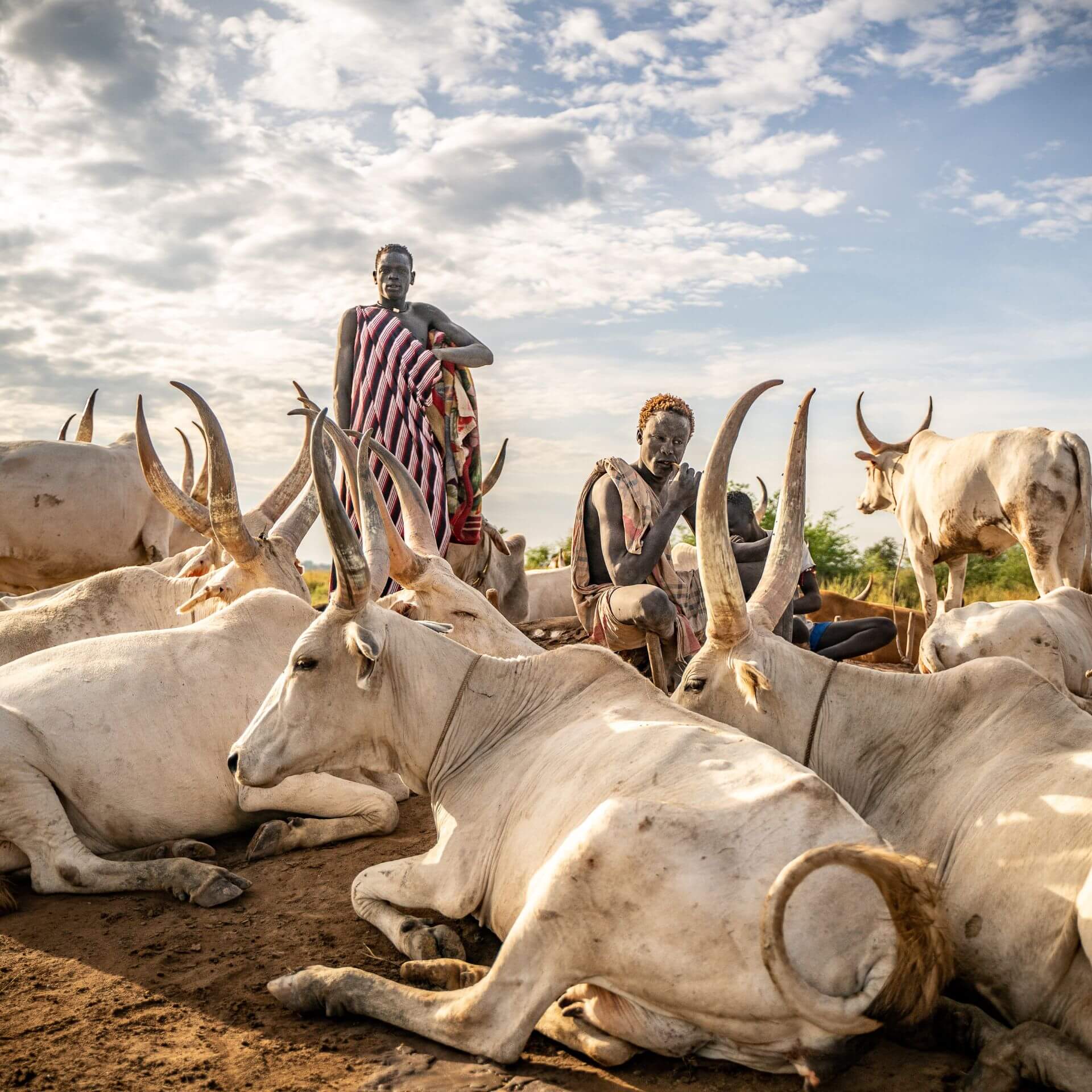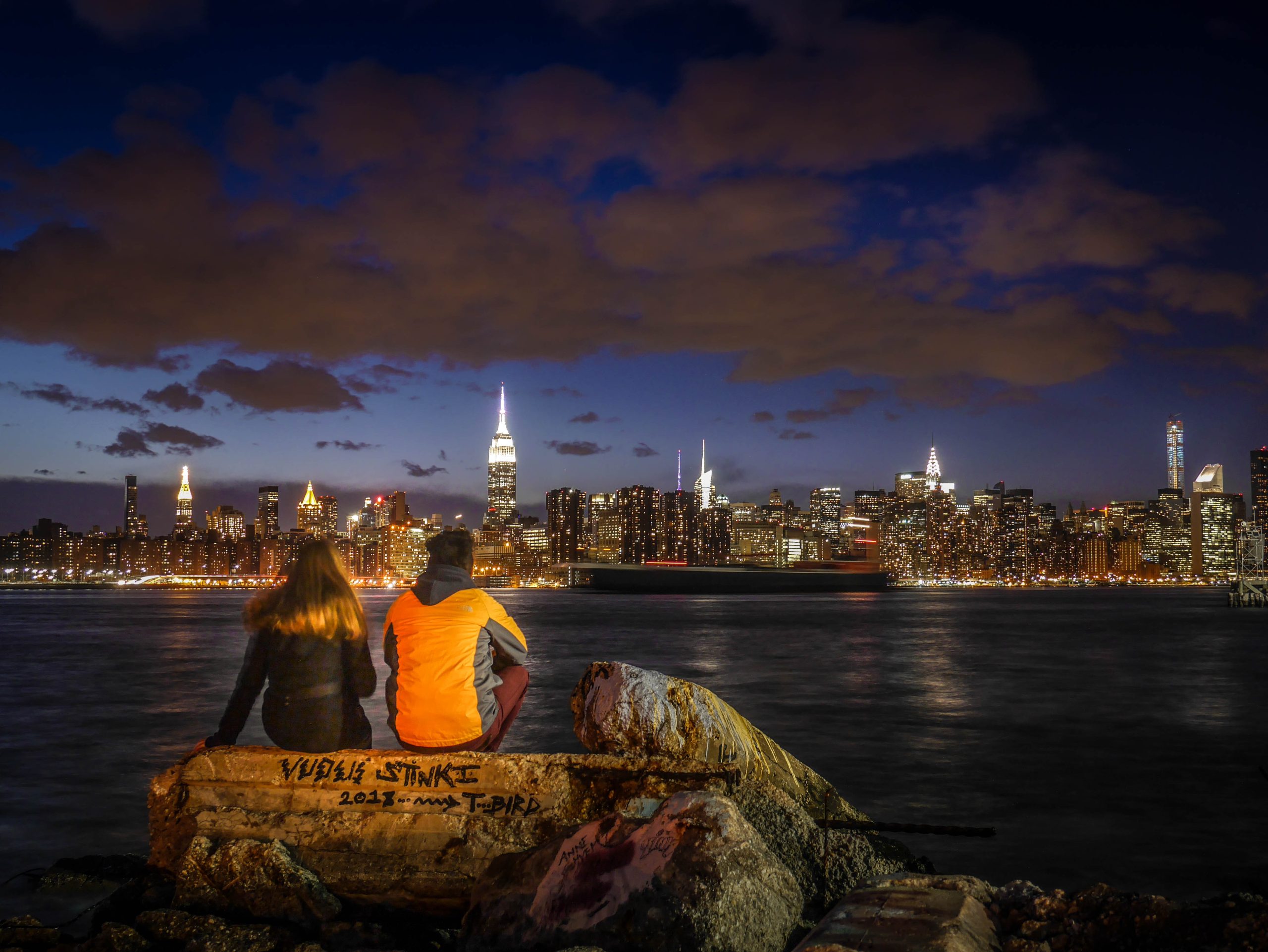From the top of the world to natural depressions in Africa, these are the weirdest and most unusual natural wonders you can visit.
While some seek sunny beaches and all-inclusive resorts, others like to live life on the wild side and come face to face with their fears whilst travelling. If the latter gets your blood pumping, we’ve rounded up three of the most wonderful (and dangerous) places you could hope to explore on our incredibly diverse planet. From boiling-hot valleys to sub-zero peaks, here are three fascinating places to venture for fearless travellers.
Danakil Depression, Ethiopia
Fearless travellers are drawn to the impressive geological features of the Danakil Depression, where geysers, acidic springs and lakes of lava paint this volcanic landscape in vibrant shades of red, green and blue. The area exists due to the tectonic plates of Africa and Asia drifting slowly apart, at a rate of 1-2 cm per year.
This incredible and dangerous landscape has fascinated scientists for many years, and offers insights into the origins of life on Earth as well as potentially explaining how early stages of life forms on Mars could evolve. With much of the terrain covered in razor-sharp lava and thick smoke seeping from the ground, you need to wear protective gear to explore this area safely.
The best places to explore are:
- Erta Ale: this is a challenging, 3-4 hour trek to the top of a deep, smoke-filled crater. Be sure to wear inhalation protection and thick-soled shoes to protect yourself from the sharp edges and thick smoke.
- Dallol: this area is a constantly changing playground of hydrothermal activity, causing the ground to erupt into a new pattern of springs and salt mounds daily. You’ll need an expert guide to avoid treading on unstable ground and falling into a hot, sulphuric pool.
Read more: Is AI going to change photography forever?
Read more: The logistics of planning the longest train journey in the world
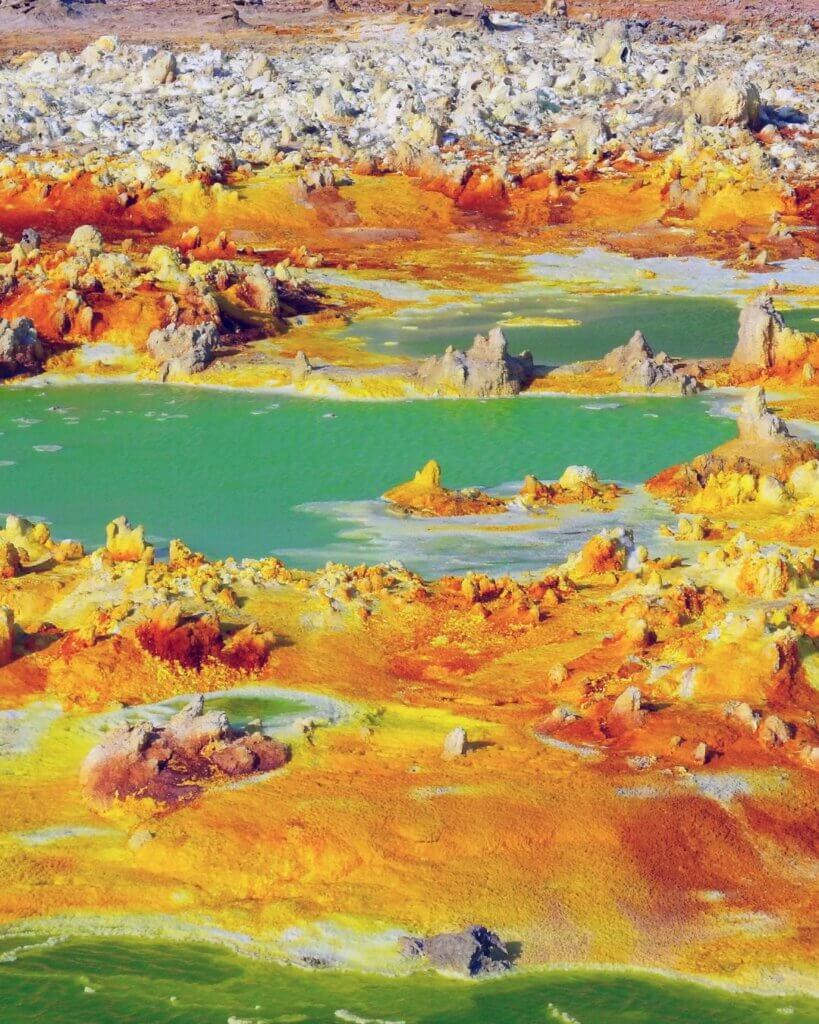
How to get to the Danakil Depression?
Unfortunately due to the current situation in the Tigray region, traveling to the northern part of Ethiopia is not recommended. I visited the Danakil Depression about 6 years ago and used a local tour operator to get there. Tours to Danakil cost anything between 300-700 EUR and you can find multiple options after a quick Google search.
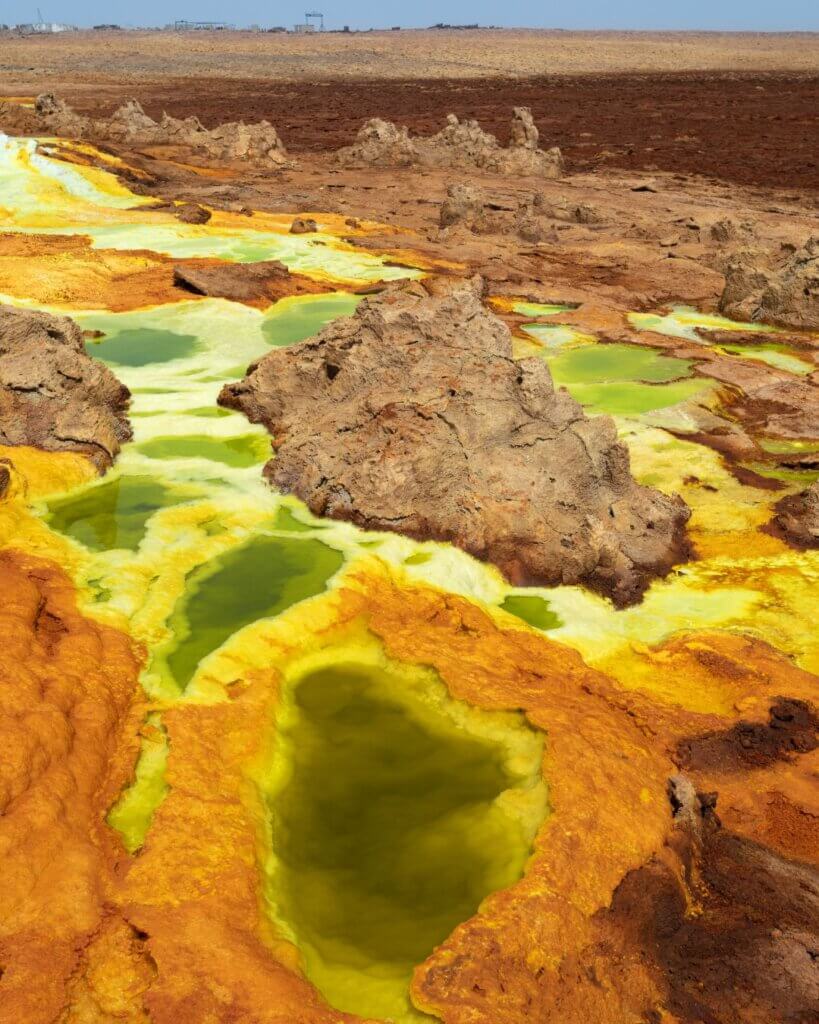
Death Valley, USA
Do you dare to enter the arid wilderness of Death Valley? This immense stretch of rocky hills, desolate salt flats, and ancient craters is known as the hottest and driest place on earth, due to its unique geology. The valley is essentially a long, deep basin that sinks to 282 ft below sea level, and as it’s surrounded by soaring mountains, the air is trapped and repeatedly heated – causing it to act like a convection oven.
To traverse this fascinating landscape you’ll need to pack for extreme temperatures and be prepared to explore off the grid, as your cell won’t work this far into the wilderness. It’s also worth keeping in mind that scorpions, black widow spiders and multiple venomous snakes call the valley home – so keep your trousers tucked into your socks and don’t place your hands anywhere you can’t see clearly. Key points to explore in Death Valley include:
- Zabriskie Point: renowned for its breathtaking sunrises and sunsets
- Badwater Basin: as the hottest area, only venture here in the early morning and late evening
- Furnace Creek Visitor Centre: a great place to learn about the history and geology of the valley
- Dante’s View: this stunning viewpoint stands at 5,475 ft and allows you to see as far as the Sierra Mountains on a clear day
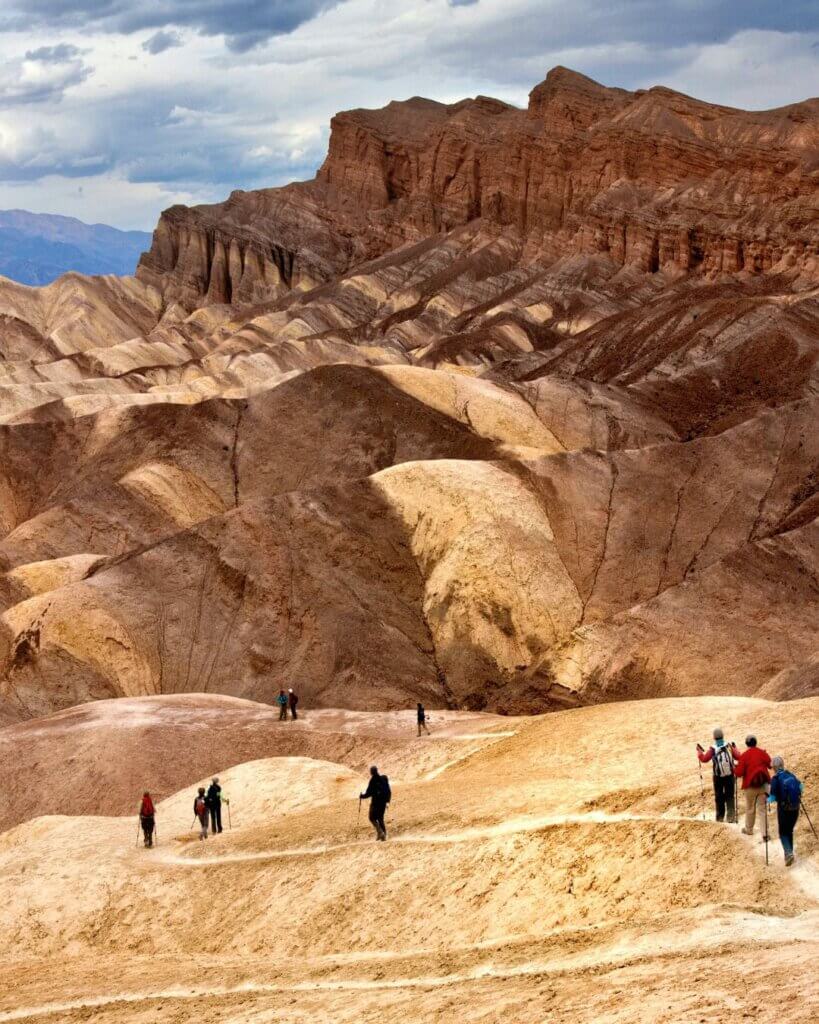
How to get to the Death Valley?
Driving independently from Las Vegas is the most efficient way to get there. The quickest way is via Pahrump, Nevada. From Interstate 15, take NV 160 to Pahrump. Just north of Pahrump, turn left onto Bell Vista Road, which becomes Stateline Road in California. Continue to Death Valley Junction, then turn right onto CA 127, followed by a quick left onto CA 190 leading to Death Valley.
Or just put Dante’s View on Google Maps.
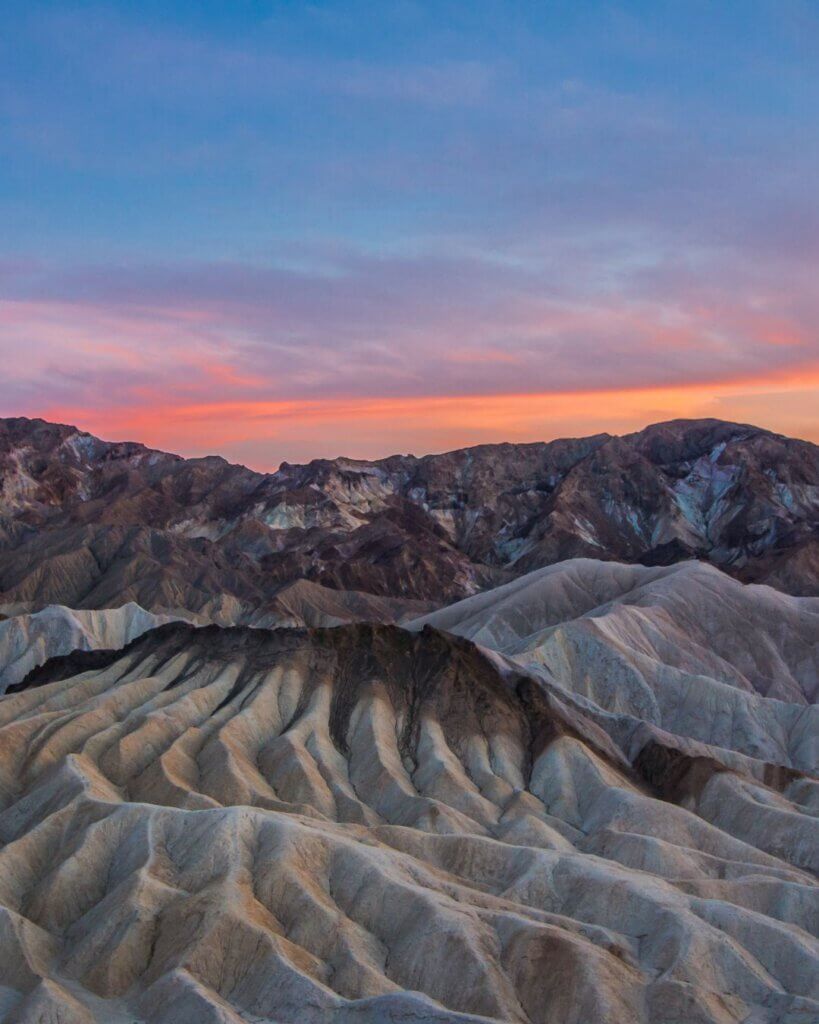
Mount Everest Base Camp, Nepal
If you are seeking a dangerous expedition, you couldn’t get much more treacherous than attempting to scale Mount Everest. Climbing Everest is more a lifetime archivement. Fortunately, travelers wanting to explore what it feels to get close to the top of the world and don’t have the condition to reach the peak, a tour to the Mount Everest Base Camp is a good option.
Tours are made for medium/high level non-athletes and with a few weeks (or maybe months) of preparation, you can do it yourself.
- Aerobic Training: cardiovascular training conditions your heart and lungs to be more effective, which is an essential part of avoiding altitude sickness. Running, swimming and rowing are all brilliant exercises to incorporate into your training programme.
- Strength Training: You’ll need strong legs to climb the mountain, but all-over body strength is essential to avoid injuries. Try planks, push-ups, squats, lunges and calisthenic exercises are a great place to start.
- Mountaineering Experience: It makes sense that you should have extensive climbing experience before attempting Mount Everest, as you’ll rely on a whole catalogue of skills and techniques to make it to the summit and avoid disaster en route.
Read more: How to Travel Around Turkmenistan: Essential Tips for Exploring with Local Tours
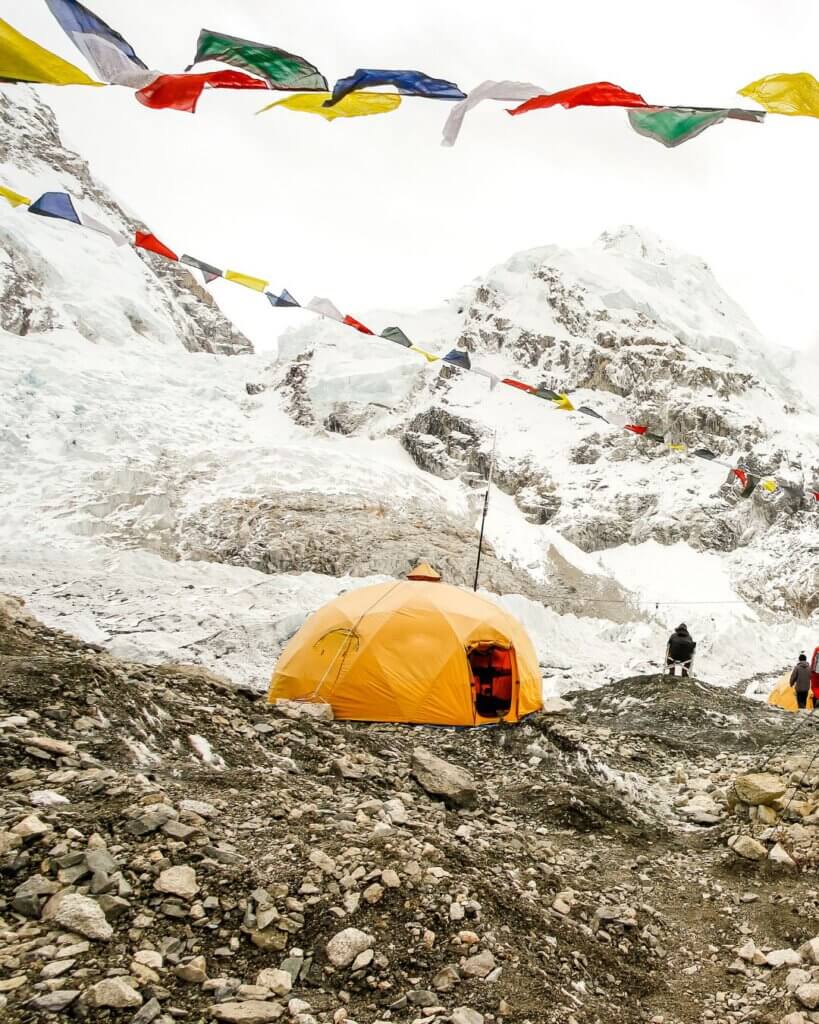
How to get to Base Camp?
The most convenient option is opting for a tour operator. Large companies like G-Adventures offer tours to Base Camp for 10-15 people. They range from 1000-1500 EUR and they can prepare you properly for this adventure.
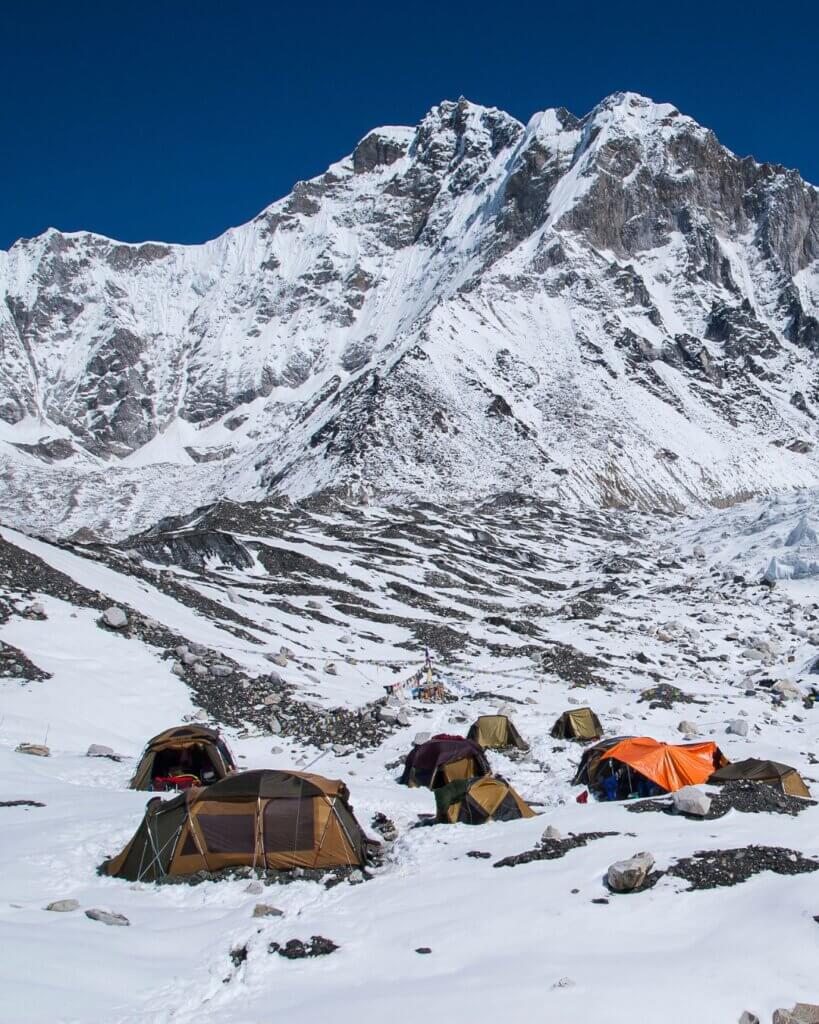
Salar de Uyuni and the Eduardo Avaroa National Reserve, Bolivia
The Salar de Uyuni and Laguna Colorada in Bolivia are two of the country’s most breathtaking natural wonders. The Salar de Uyuni, the world’s largest salt flat, spans over 10,000 square kilometers and creates a surreal, mirror-like surface during the rainy season, reflecting the sky in a mesmerizing display.
This vast, white expanse is contrasted by the vibrant red waters of Laguna Colorada, a shallow salt lake located in the Eduardo Avaroa Andean Fauna National Reserve. The lake’s striking hue is due to red sediments and algae, and it is home to flocks of pink flamingos, adding a splash of life to the already stunning landscape. Together, these two sites offer an unparalleled glimpse into Bolivia’s diverse and dramatic natural beauty.
Read more: How to plan a trip to Salar de Uyuni
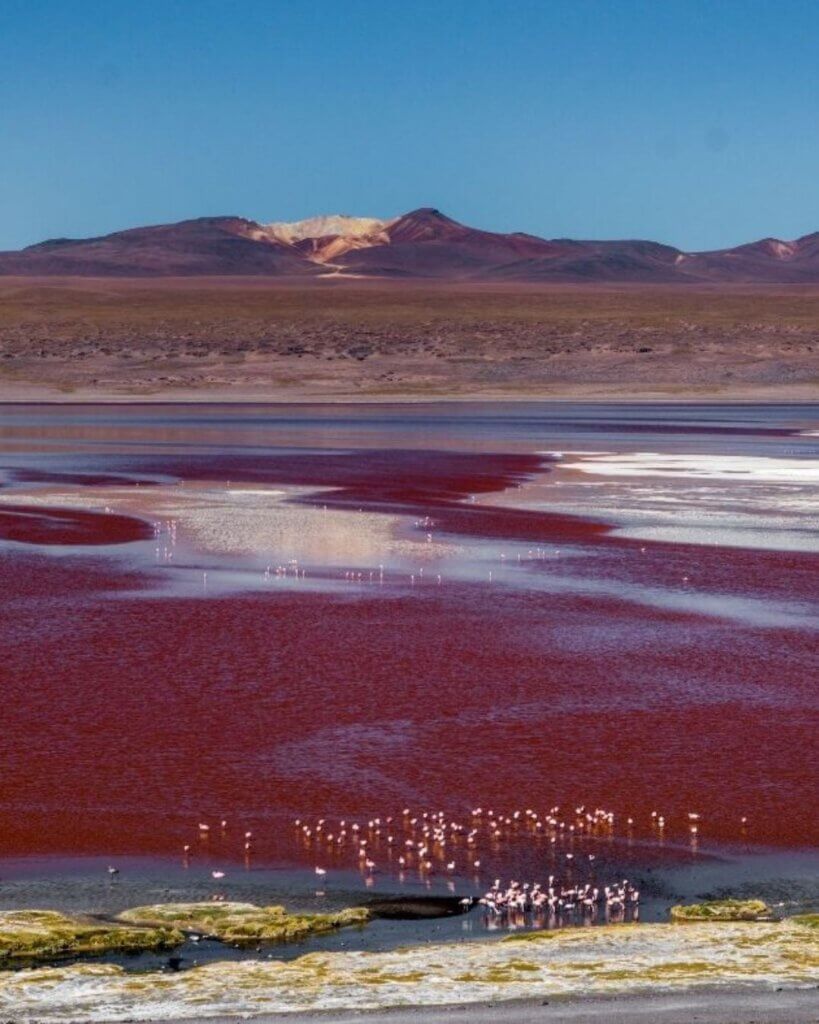
How to get to the Salar de Uyuni and the national reserve
This is an obligatory stop if you are in Bolivia. It is also a great route to take if you are traveling from Bolivia to Chile (or viceversa). Tours with local operators are offered either in Atacama or the town of Uyuni, and the price ranges from 200-500 EUR.
If you decide to book with a European or American company, they would usually offer full itineraries that can be overly expensive.
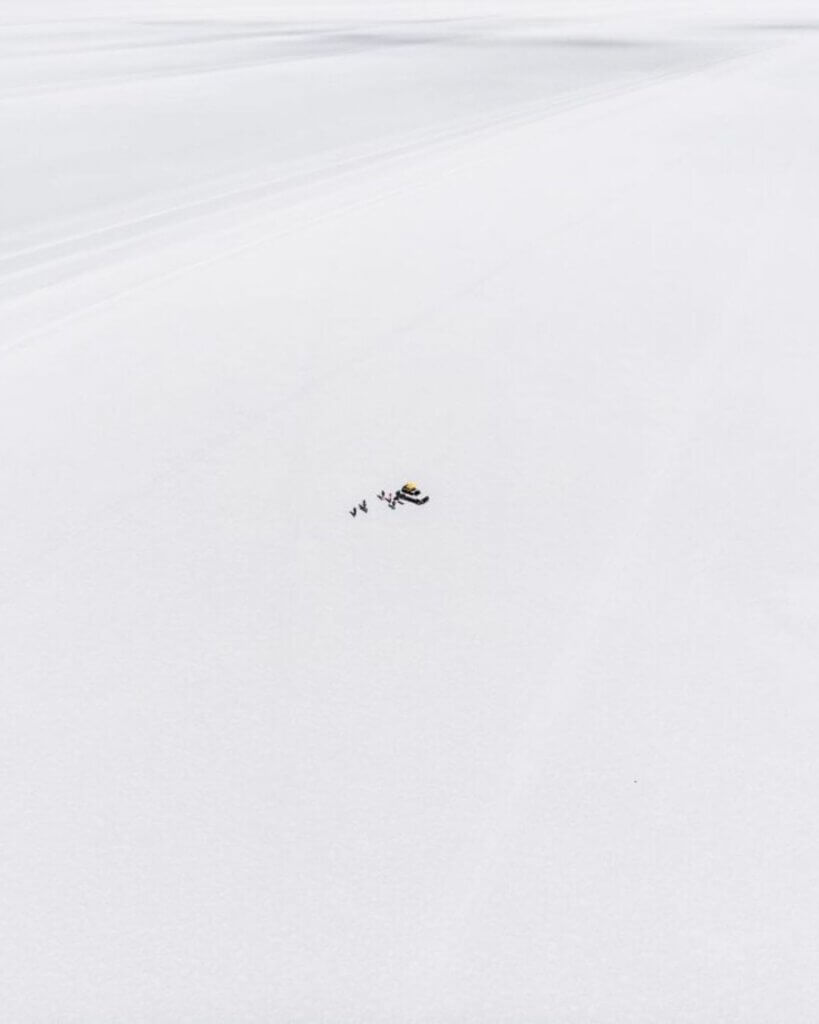
White Desert National Park, Egypt
The White Desert National Park in Egypt is a striking natural wonder, renowned for its surreal landscape of white chalk rock formations sculpted by wind and sand. Located in the Farafra Depression, this unique desert expanse looks like a frozen sea of cream-colored waves, punctuated by bizarre shapes resembling giant mushrooms, icebergs, and otherworldly sculptures.
As the sun sets, the park transforms into a magical realm, with the white rocks glowing under the moonlight, creating an ethereal and mesmerizing atmosphere. Visitors to the White Desert can experience the tranquility and otherworldly beauty of this unique destination, making it a must-see for adventurers and nature lovers exploring Egypt’s vast deserts.
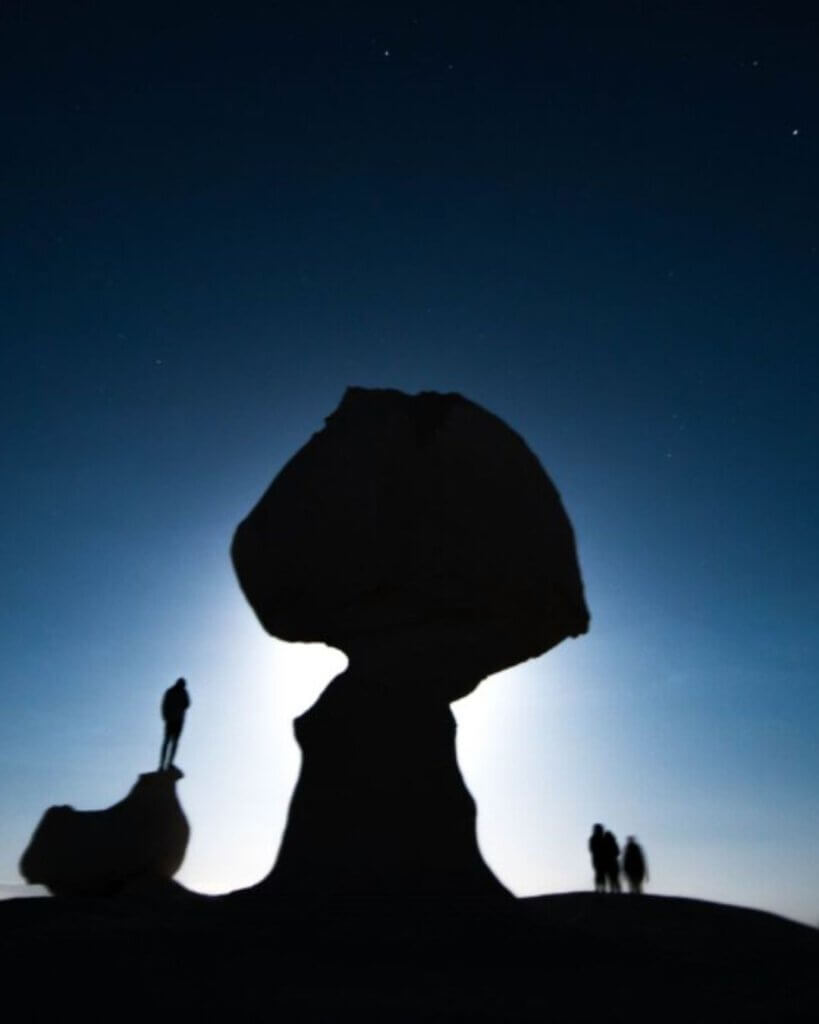
How to get to the White Desert National Park?
I visited this natural wonder with some people from Couchsurfing during my time in Cairo. The national park is located around 7 hours away from the capital and you will need a 4×4 car to access the desert area.
Currently, private companies offer 2/3 Day tours to the White desert with some stops at the Black Desert and a few oases along the way. Tours can start at 400-500 EUR and go as high as a few thousand.
Read more: Everything you need to know before going to the White Desert in Egypt
